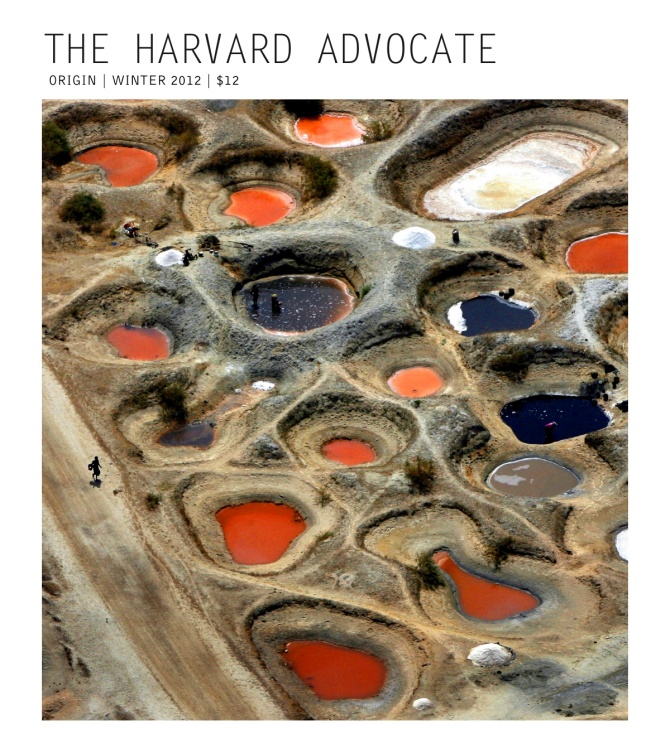The Harvard Advocate is proud to announce the launch of its winter issue, Origin. Below, photographer Finbarr O’Reilly tells the story of Origin‘s cover photo. Origin launches today; you can subscribe at www.theharvardadvocate.com. Learn more about O’Reilly’s photography at www.finbarr-oreilly.com.
From 2,000 feet above the flats of Senegal’s Sine Saloum peninsula along Africa’s West coast, shallow circular holes scooped from the earth by salt miners resemble craters punched into a lunar landscape. Brackish water seeps into the troughs from the surrounding ocean and, tinted by bacteria, mirrors the midday sun in pools of red, yellow, blue and green — a jumbled planetary Damien Hirst spot painting.
My vantage point is from an Ultralight “plane,” which is more like a bicycle with floppy canvas wings and a propeller on the nose. There are no doors, just a motorbike-style windscreen and the noisy rush of air shaking the frame of this flimsy sky machine.
From this height, tiny stick figures can just be made out, bent laboring at their tasks beside the swimming pool-sized holes. Smaller white mounds of salt dry under a blinding sun that burns black skin even blacker. From up here, I can’t see the sweat on the brows of the workers – mostly women, some with babies strapped to their backs – nor the cracked skin of hands and feet rubbed raw by millions of tiny, jagged crystals. The corrosive power of the salt eats through metal pans used to scoop the saline water, turning them first to rust, then flakes, then dust.
The women down there gather salt by hand into 110-pound sacks, which sell for about $2 or are traded for sugar with neighboring Gambia, where salt is mainly used to preserve fish in areas without electricity. Trade is informal and vendors elude corrupt tax and customs officials by slipping through the maze of mangrove swamps along the liquid border, exchanging goods between wooden canoes in the hidden shallows.
The scale of my aerial view dwarfs such toil on the salt flats leading out to sea, a view interrupted only by clusters of ragged palm trees that shade thatched village huts dotting the coastline. Out there, the sea, too, reflects the sun, glinting hard and white over a vast, rippling emptiness. But far below my feet, in those murky pools, color glows from the earth. And people scratch a living from it.
By Finbarr O’Reilly

